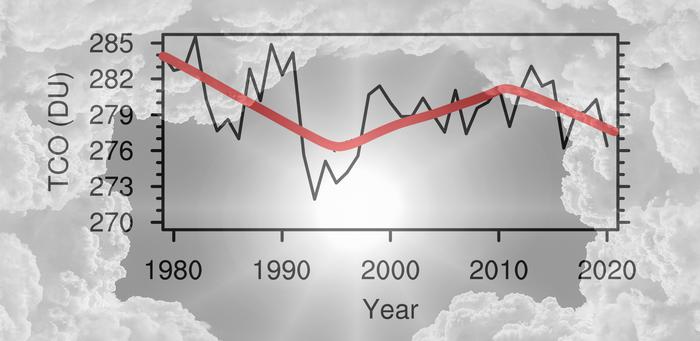According to a new study published in Advances in Atmospheric Sciences, the ozone isn’t healing as quickly as expected, leading to higher levels of surface ultraviolet (UV) radiation in recent years.

Credit: Yan Xia
According to a new study published in Advances in Atmospheric Sciences, the ozone isn’t healing as quickly as expected, leading to higher levels of surface ultraviolet (UV) radiation in recent years.
Despite projections that the ozone layer would fully recover by mid-century, researchers found rising UV radiation levels in the tropics and northern mid-latitudes after 2010, posing risks to human health and the environment.
“Our analysis shows disturbed ozone levels and enhanced surface UV radiation for more than a decade after 2010,” said lead author Yan Xia of Beijing Normal University. “The slower recovery of stratospheric ozone is largely unexpected.”
The team analyzed satellite data and model simulations to assess long-term changes in ozone and surface UV levels around the globe. “We observed a decrease in ozone levels and an increase in UV radiation over latitudes between 30°S-60°N after 2010,” Xia said. “Especially in the Northern Hemisphere, the rising magnitude of surface UV radiation from 2011 to 2020 reached 0.5-1.4% per year—this should not be neglected.”
“Continuous monitoring of ozone and UV radiation levels is important to better understand why ozone recovery is delayed and whether this trend will continue,” Xia warned. “Policymakers and the public should be aware of and prepare for the harmful effects of enhanced surface UV radiation on the environment, agriculture, and public health.”
The findings are a sobering reminder that ozone layer restoration is a complex process affected by factors like global warming—and full recovery remains uncertain. Continued research and implementation of policies like the Montreal Protocol are critical to reverse this worsening trend, reducing UV exposure, and protecting life on Earth in the coming decades.
Journal
Advances in Atmospheric Sciences
DOI
10.1007/s00376-023-2354-9
Article Title
Increasing Surface UV Radiation in the Tropics and Northern Mid-Latitudes due to Ozone Depletion after 2010
Article Publication Date
12-May-2023




